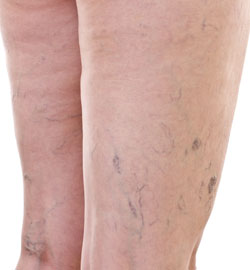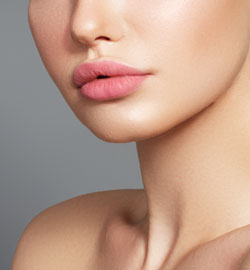


Acne
THE ACTIVE PHASE
Acne is a problem that affects patients from 10 to 20 years old and has its origins in a disfunction of the pilosebaceous follicles, on the face and body, particulary on the trunk, shoulders and upper back. The causes are found in hormonal disorders, stress or use of irritating cosmetics. Although it is not contagious, it is difficult to predict the duration.
What can a patient do?
• Avoid picking at the pustules as this will only spread the bacteria and the infection and could cause permanent scarring
• Avoid the use of oily cosmetics
• Cleanse skin nightly, removing all make-up
• Eat a balanced diet
• Wash the skin at least twice a day, taking care not to scrub
• Wait at least 30 days to see improvement; acne sometimes gets worse before it gets better
What can a doctor do? A doctor has the following choices:
1) Topical astringents – Topical or oral antibiotics (using injections of Candida).
2) Vitamin A (Tretinoina) that helps to open pores (taking care not to harm the liver)
3) Accutane, especially in the case of cystic acne
4) Daily application of glycolic acid that removes dead cells, cleanses hair follicles and normalizes the functions of the sebaceous glands.
THE MAINTENANCE PHASE
Once there is permanent scarring due to acne, the only recourse is to levigate the skin as soon as possible.
• Peeling with high concentrate of glycolic acid
• Peeling with Trichloroacetic acid concentrate (from 25 -50%)
• Erbium Laser
Often these treatments must be repeated two or three times, but the results are often surprising, especially if the doctors instructions are followed before and after the treatment.
The Lips
FILLERS
Lips can be improved in various ways: whether the objective is to define them, to outline them, to make them fuller in the most natural way possible. Techniques vary and different fillers and their effects vary. They are inserted on the outline of the lip or in the thicker part. They are hyaluronic acid, calcium hydroxylapatite or autologous fat transfer.
The most important issue is to create lips that are absolutely natural-looking that don’t mimic the anatomical absurdities seen on certain show-business types.
SURGICAL MODELLING
This is a very precise and refined surgical correction that can easily be performed with a local anaesthesia, like a dental procedure. It does not cause excessive swelling. It lifts the upper lip permanently. This procedure can be used together with a filler technique, with a hyaluronic acid base, of other bio-materials to thicken the lip. Done properly, the procedure is permanent.
BAR CODE
This is what the area above the upper lip is sometimes called, with its fine vertical lines. The treatment of these wrinkles can be performed with hyaluronic acid in connection with a treatment to rivitalize the skin. This condition is exacerbated by smoking and antioxidant creams can help to enhance the results.
Chemical Peeling
Chemical Peeling is the application of one or more exfoliating agents that destroy portions of the epidermis or the dermis to promote regeneration of new tissue. The application of these chemicals produces a controlled trauma that results in a rejuvenation of the skin, with the disappearance of spots, sun damage, wrinkles and some superficial scarring or stretch marks.
The substances most often used are glycolic acid, trichloroacetic acid(TCA), trans retinol, fenolo, mandelic acid. These can be used separately or in combination. Peeling can be done on three levels: superficial, medium and deep, depending on the concentration of the substances used and the depth of exfoliation they are able to achieve.
A superficial peeling enhances the quality of the skin without altering its structure; in this case the skin responds with general reddening and at times a whitening due to the interaction with the proteins in the skin cells. The redness lasts for a few hours and the exfoliation can continue for 7/10 days.
The substances used for this peeling are:
- Glycolic Acid in various concentrations (50%, 70%, 100%)
- Trichloracetic acid (TCA) concentrates (10% 15% 20%)
- Retinoic acid in various concentrations
- Azelaic acid
- Resorcinol
- Thioglycolic acid
Treatments with these substances can be repeated after 10/15 days.
Peeling of medium intensity produces an immediate redness with a whitening of the treated areas and a reaction in the deeper layers of the epidermis. The exfoliation can continue for 8/12 days and the redness will last for 3 weeks approximately. The principal agent used is Trichloroacetic acid (TCA) at 35 % or 50 % concentrations in combination with various exfoliating agents. This treatment can be repeated after 3 months.
Studies have shown that consecutive applications and repeated peeling, superficial and deep, can regenerate the skin noticeably and stimulate collagen and elastin production.
Deep peeling uses phenol for the most part that acts on epidermis and dermis. This substance, in combination with other exfoliating agents can treat pock marks, superficial and deep wrinkles, scarring. The down-side is the possibility of discoloration of the skin. These methods do not reduce saggy skin which would require a lift, but they are able to reduce fine lines and creases, giving the skin a fresh and taut appearance.
In most cases, it is useful to do a preliminary treatment on the skin that will “open” the pores, facilitating penetration of the agent used; this pre-treatment can be done by the patient at home to prepare the skin so that less substance is used. Even the treatment after the application of the peeling substance is important to ensure a good result. The possible complications are: infections, rashes and herpes sores.
The side effects in peeling procedures are next to none since superficial and medium peelings are well tolerated with minimum risks in most patients with all types of skin.
The important thing to remember is to be protected from the sun’s rays.
Overweight
People are considered overweight when their body fat deposits exceed 5-20% of body weight, depending on body structure. Above these percentages, when body fat exceeds 20%, it is considered obesity.
According to statistics, the situation is grave; overweight is the most serious health issue facing modern man because it is so widespread and difficult to eradicate and also because the remedies at our disposal are few and “burdensome”.
Obesity is not an overnight phenomenon. It is progressive and its first symptoms can begin to appear in infancy. These early signs of overweight should be addressed as soon as possible, because fat cells can multiply quickly during the stage of adolescent development causing possible structural problems. Excessive weight tends to move the center of gravity forward which can cause curvature of the spine (increasing the lombar curve of the spinal column with respect to the sagittal plane) and the rotation of the pelvis forward with respect to the femoral axis.
Therefore, to counteract these bio-mechanical variations, there can be an increase in spinal kyphosis (a curving of the rear surface of the spine). In turn, the legs, bearing excess weight, become deformed; usually resulting in “knock-knees” and falling arches or flat feet.
Cellulitis
First of all, we must distinguish between cellulitis and fatty deposits.
Cellulitis is a pathology of the tissues which affects 90% of women and appears as an alteration of the skin’s surface that resembles the skin of an orange. Fatty deposits are, instead, localized fat accumulations in various parts of the body.
The main causes of cellulitis are hormonal disfunctions and poor circulation, given the particular structure of the venous system in women’s lower legs. Several factors can aggravate the situation: smoking, oral contraceptives, poor diet and obesity, sedentary life-style.
There are three phases to cellulitis. In phase one, there is a slight edema under the skin and congested veins. In phase two, the substrate of the skin is poorly oxygenated and therefore thickens, causing the “orange peel” effect; in the third, fat nodules appear under the skin. Cellulitis will not disappear completely, but it can be improved. It is possible to go from phase two to phase one but there is no medicine or surgical procedure that can cure it forever.
SOLUTIONS
In general, the patient must follow an anti-toxin diet, stop oral contraceptives, begin a regime of minerals, vitamins, antioxydants, drink at least 2 liters of water per day, get plenty of physical exercise (aerobics and swimming). The situation can be helped by targeting problem areas with various methods and, in the case of fatty deposits, with cosmetic surgery.
AESTHETIC METHODS
Pressotherapy
Passive exercise
Lymphatic drainage
These techniques reactivate circulation and tone the muscle mass.
MEDICAL METHODS
The popular, newly modified, Mesotherapy consists of injecting homeopathic or allopathic substances under the skin with very fine needles that improve microcirculation and local metabolism. It is a personalized method that uses homeopathic substances (hamamelis, coenzima, fucus, etc) or allopathic remedies (vasoprotectors, anti-edema, aminophylline depending on the type of problem (edema or insufficient circulation).
The length of the cycle is 10 treatments and results become evident after the third or fourth application and continue for a few months after the treatment is completed. The patient should not expect a loss in weight or volume but only an improvement in the surface of the skin and a reduction of of heaviness in the limbs.
Other methods still being used are electrolipolysis, oxygen-ozone therapy, carboxytherapy, etc.
“Spider” Veins
The dilation of the veins on the skin’s surface (also called micro-veins or spider veins) appear most often on the inner side of the legs and thighs. This is a condition that affects 1out of 3/4 women whereas only 1 out of 13/14 men are affected. The symptoms are: heavy sensation in the legs, itchiness, cramps, edema and alterations to the skin, burning sensation during the menstrual cycle. Particularly frequent is the dilation of the secondary veins during pregnancy that affects the smaller veins more than the saphenous vein.
THERAPY
The treatment consists of:
- Support stockings (elastic bandages, adhesives, support hose)
- General life-style changes
- Medical therapy
- Hydrotherapy
- Sclerosant treatments
- Surgical treatment
By life-style changes we mean:
- Beginning an exercise regime
- Avoiding high-impact sports
- Avoiding tight clothing around thighs
- Avoiding excessive exposure to the sun
- Resting with feet elevated in bed
- Returning to a normal weight
MEDICAL METHODS
The popular, newly modified Mesotherapy consists of injecting homeopathic or allopathic substances under the skin with very fine needles that improve micrcirculation and local metabolism. It is a personalized method that uses homeopathic substances (hamamelis, coenzima, fucus, etc) or allopathic remedies ( vasoprotectors, anti-edema, aminophylline depending on the problem (edema or insufficient circulation).
The length of the cycle is 10 weekly treatments followed by a mainenance treatment once a month. Results become evident after the third or fourth application and continue for a few months after the treatment is completed. The patient should not expect a loss in weight or volume but only an improvement in the surface of the skin and a reduction of of heaviness in the limbs.
Other methods still being used are electrolipolysis, oxygen-ozone therapy, carboxytherapy, etc.
SOLUTIONS
- Drugs that diminish the permeability of the veins
- Hydrotheray performed in many thermal baths has proven advantages; however, in Italy it is not common practice.
- Sclerotherapy is based on the principle certain substances injected into a vein may alter the vein structure until it actually closes it; it is a chemically induced flebitis. In this way the vein becomes a foreign element and is gradually reabsorbed. The substances most often used are Lugol, Trombovar, Atoxisclerol, Scleremò etc.
The injection must be executed with extreme precision by doctors expert in the treatment. In any case, an exaggerated desire for perfection could result in a less than perfect outcome.
It is always advisable to follow the treatment with the application of a support stocking.
From the book “COSMETIC TRAINING” by Robert Tarullo
